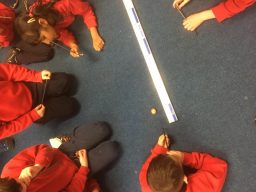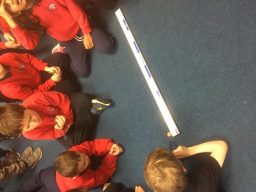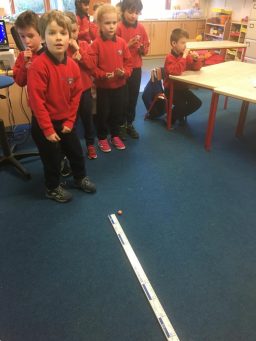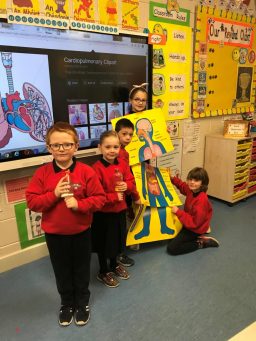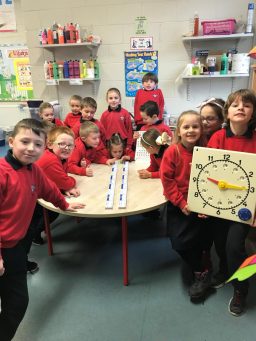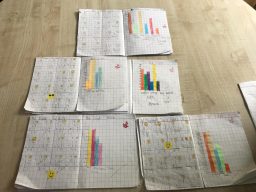Living Things – 1st Class
Strand
Living things
Strand Unit
Myself
Content objectives
- The children be enabled to create a model of our lungs/ribcage and diaphragm.
- The children will understand the function of our lungs. The importance of fresh air and exercise for our lungs. The effect of Asthma on bronchioles of some children in the class.
- The children will understand the importance of caring for the environment correctly; trees which recycle our Carbon Dioxide C02 and give us Oxygen 02 to breathe.
- The children will conduct their own experiments to measure their breath capacity before and after exercising using metre sticks and bouncy ball.
The children will record and graph their results in their Math copies
Questioning
Why do you need to breathe? (To take in air)
Why do you need to take in air? (So that your body gets oxygen)
Why do you need oxygen? (Body cells – the tiny pieces that make up your body- use
oxygen to release energy from food. Without oxygen they would die in a few minutes).
What do you breathe out? (Carbon dioxide)
Introduction:
Discuss with the class why do we need to breath and why do we take in air. Discuss where our breath comes from i.e. our lungs.
When you breathe in, a muscle under your chest, called your diaphragm, moves down and your ribs move out. This makes the space bigger and so you get lower air pressure in your lungs. Air now rushes in from outside. When you breathe out your diaphragm moves up and your ribs move back in, and the air gets pushed out. Explain to class that we will now experiment how our lungs work.
Main Body
Make a Model of Your Lungs
1. Push one balloon into the neck of the bottle, and fold the neck of it round the neck of the bottle.
2. Cut the entire neck off the other balloon, and dispose of the neck. Stretch the remaining piece of balloon, placing it over the open end of the bottle to form an air- tight join
3. Pull on the middle of the piece of rubber. What happens to the balloon? (The balloon gets bigger).
4. Let go the piece of rubber, and then push it in gently. What happens to the balloon? (The balloon gets smaller).
5. Repeat stages 3 and 4: this time breathe in while doing Stage 3 – can you feel your ribs move out as your lungs expand and your diaphragm moves down; and breathe out while you do stage 4 – can you feel your ribs move back in as your lungs contract and your diaphragm moves up Can you see that your diaphragm (the rubber) and lungs (balloon) behave in a similar way to the rubber and balloon?
Conclusion
Children worked in group to test their lungs (breathing in and out). The children were given a straw, a ball and a metre stick. They consolidated their learning by using their
lungs to blow out air through the straw and measure (in centimetres) how far the ball travelled. In groups, the children represented the data they collected on a bar chart.

